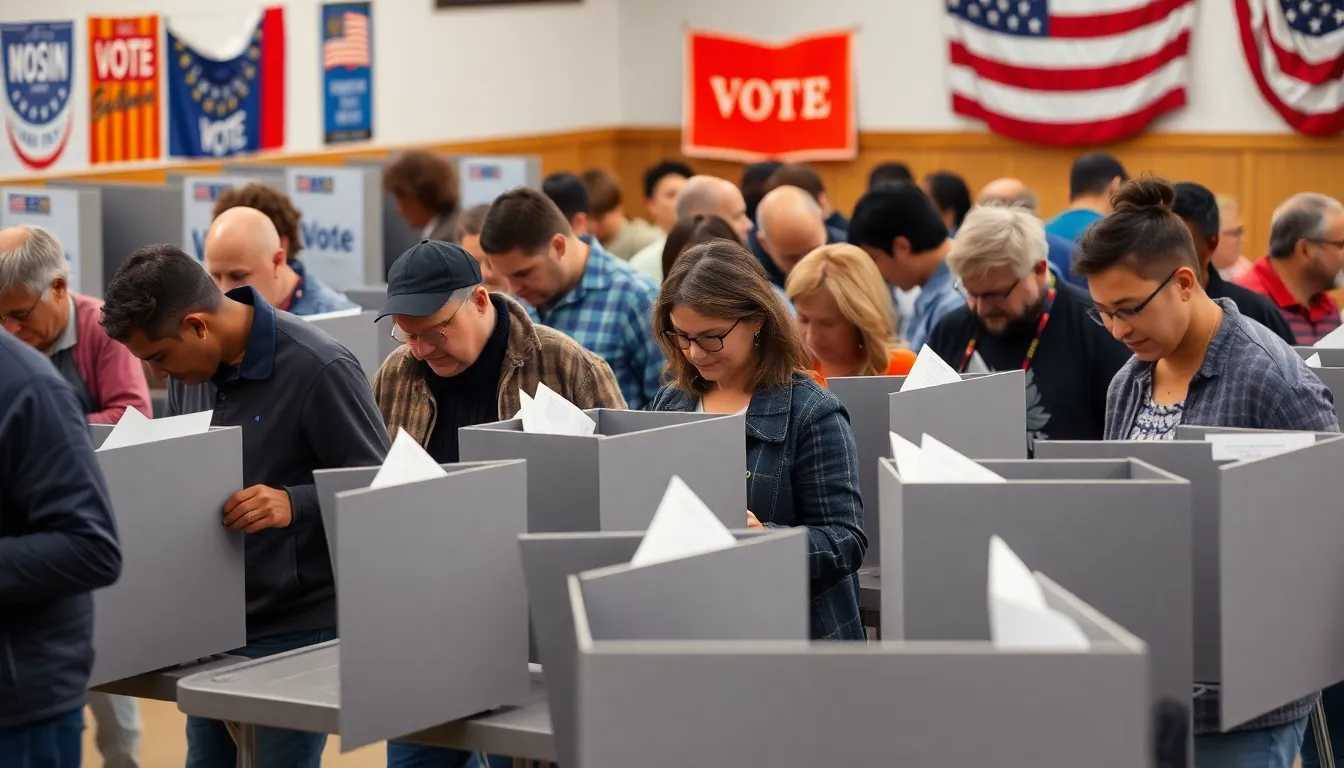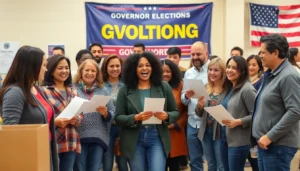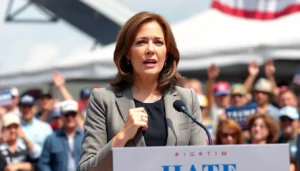Governor elections play a crucial role in shaping a state’s future. They determine the leadership that will guide policies on education, healthcare, and public safety. With the power to influence local legislation and budget allocations, governors hold significant sway over their constituents’ daily lives.
As election seasons approach, candidates emerge with diverse platforms and visions for their states. Voter engagement becomes essential as citizens weigh their options and consider the implications of their choices. Understanding the dynamics of governor elections not only informs voters but also highlights the importance of civic participation in democracy.
Table of Contents
ToggleOverview of Governor Elections
Governor elections play a crucial role in shaping state policies and governance. These elections determine the leadership that directly impacts various aspects of residents’ lives.
Importance of Governor Elections
Governor elections significantly influence state legislation regarding education, healthcare, transportation, and public safety. Governors propose and enforce laws, allocate budgets, and oversee state agencies. Voter engagement is vital as citizens participating in these elections can voice their preferences on pressing issues, ensuring their needs and concerns influence state governance. Diverse candidates offer varying perspectives, enriching the political landscape and deepening democratic engagement.
Historical Context
Historically, governor elections reflect changing political landscapes and societal needs. The establishment of state governorships dates back to the founding of the United States, with varying election methods evolving over time. Many states adopted direct elections for governors to enhance accountability and transparency, moving away from appointments by legislatures. Key moments, such as the introduction of term limits and the expansion of voting rights, have further shaped these elections. Awareness of the historical context allows for a deeper understanding of the challenges and opportunities faced by gubernatorial candidates and voters alike.
Election Process

The governor election process consists of multiple stages, primarily involving primaries followed by general elections. Each stage plays a vital role in determining candidates and facilitating voter participation.
Primaries and General Elections
Primaries serve as the initial selection process for gubernatorial candidates. In most states, voters choose their preferred candidates from within their political party. This phase may include closed, open, or semi-closed formats. Closed primaries restrict participation to registered party members, while open primaries allow any registered voter to participate, regardless of party affiliation. After the primaries, successful candidates advance to general elections, where voters make the final selection among candidates from various parties. General elections typically occur on the first Tuesday after the first Monday in November and result in the official election of the governor.
Voting Methods
Various voting methods exist for governor elections, reflecting state regulations and technological advancements. Common methods include in-person voting at designated polling places, mail-in ballots, and early voting options. Voters generally receive mail-in ballots ahead of election day, providing a convenient way to participate. Some states also utilize electronic voting machines to streamline the voting process. Understanding the available methods ensures voters make informed choices and participate effectively in their state’s elections.
Key Issues in Governor Elections
Key issues in governor elections significantly influence voter decisions and shape state policies. Candidates often focus on economic policies, education reforms, and public health and safety.
Economic Policies
Economic policies play a critical role in gubernatorial elections. Candidates present plans addressing job creation, tax structures, and budget management. Specific proposals may include incentives for businesses, investment in infrastructure, and initiatives aimed at reducing unemployment rates. Voters assess these policies for their potential impact on the state’s economic growth and stability.
Education Reforms
Education reforms are vital topics during governor elections. Candidates propose changes aimed at improving K-12 systems and higher education accessibility. Discussions often include funding allocation, teacher support, and curriculum enhancement. Voters favor candidates who prioritize equitable education opportunities and innovative approaches to learning, especially in underserved communities.
Public Health and Safety
Public health and safety resonate deeply with voters in governor elections. Candidates outline strategies to tackle healthcare access, emergency preparedness, and crime reduction. Key issues may encompass mental health services, substance abuse programs, and initiatives to promote community safety. Voters support candidates who demonstrate clear plans for enhancing public health systems and ensuring community well-being.
Recent Trends in Governor Elections
Recent trends in governor elections demonstrate evolving voter behaviors and the rising importance of digital communication. These factors significantly shape how candidates engage with constituents and how citizens participate in the electoral process.
Impact of Social Media
Social media plays a crucial role in governor elections, influencing how candidates communicate and define their platforms. Candidates utilize platforms such as Twitter, Facebook, and Instagram to share policies, updates, and personal stories, reaching broader audiences. Research indicates that approximately 69% of adults use social media, making it essential for outreach and engagement. Moreover, candidates often use targeted ads to connect with specific demographic groups, tailoring their messages to address local concerns. The immediacy of social media allows for real-time feedback and interaction with voters, creating more dynamic campaign environments.
Voter Turnout Dynamics
Voter turnout dynamics illustrate changing participation patterns in governor elections. Historically, turnout rates for gubernatorial elections fluctuate based on various factors, including contentious races and significant statewide issues. Data reveals that voter turnout in recent elections averaged around 45%, with higher participation noted in elections featuring competitive candidates. Efforts to enhance voter access, such as same-day registration and early voting options, contribute to increased engagement. Additionally, grassroots movements and advocacy organizations mobilize efforts to encourage voter participation, particularly among underrepresented communities, fostering a more inclusive electoral process.
Governor elections play a pivotal role in determining the direction of a state’s policies and priorities. With the increasing diversity of candidates and the rise of digital communication strategies voters have more access to information than ever before. Engaging in these elections is essential for citizens to influence crucial issues that affect their daily lives.
As trends evolve and voter participation patterns shift it’s clear that understanding the electoral process is vital. By staying informed and actively participating in governor elections individuals can help shape the future of their communities and ensure their voices are heard in the democratic process.





